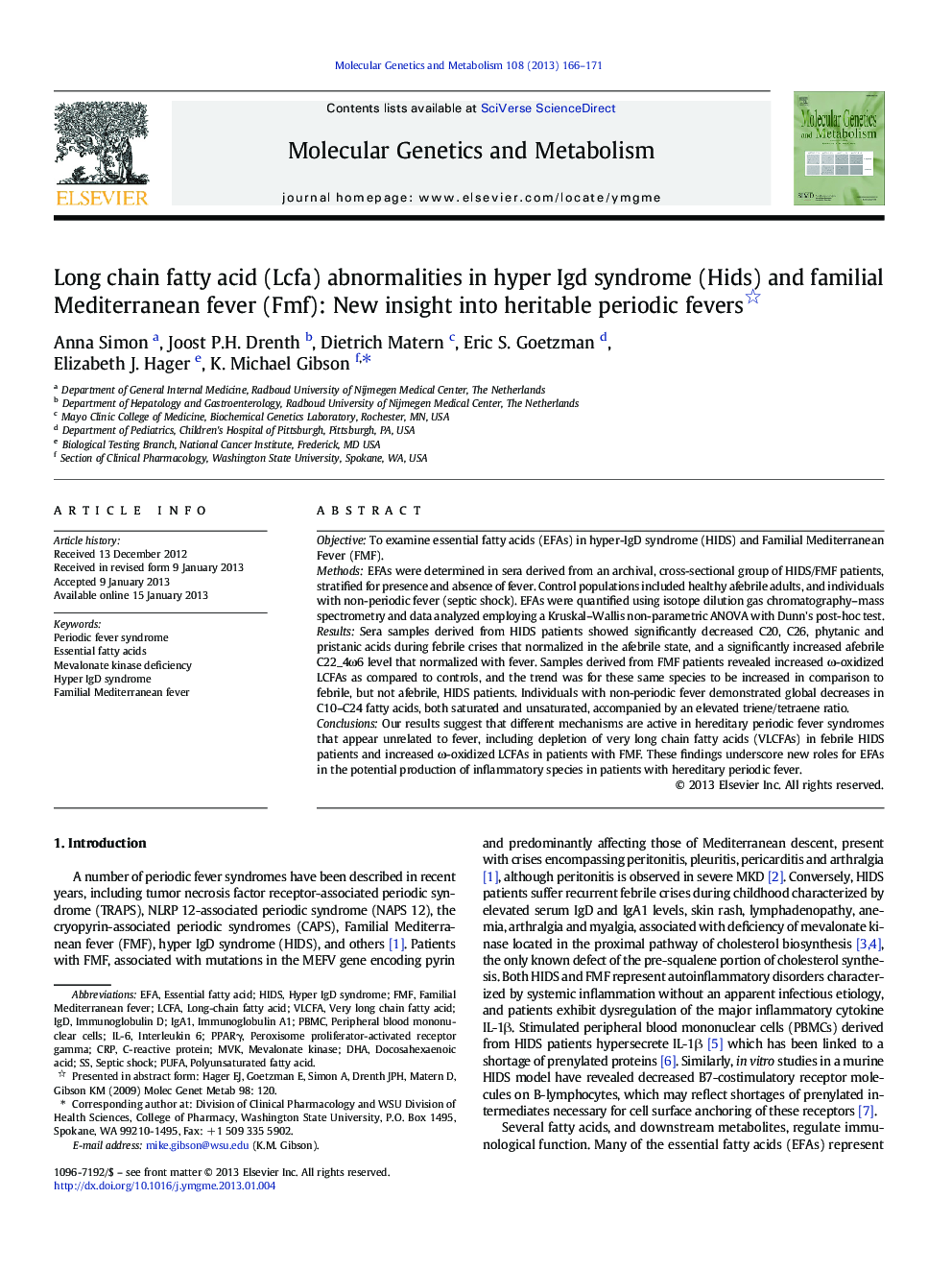| Article ID | Journal | Published Year | Pages | File Type |
|---|---|---|---|---|
| 1998568 | Molecular Genetics and Metabolism | 2013 | 6 Pages |
ObjectiveTo examine essential fatty acids (EFAs) in hyper-IgD syndrome (HIDS) and Familial Mediterranean Fever (FMF).MethodsEFAs were determined in sera derived from an archival, cross-sectional group of HIDS/FMF patients, stratified for presence and absence of fever. Control populations included healthy afebrile adults, and individuals with non-periodic fever (septic shock). EFAs were quantified using isotope dilution gas chromatography–mass spectrometry and data analyzed employing a Kruskal–Wallis non-parametric ANOVA with Dunn's post-hoc test.ResultsSera samples derived from HIDS patients showed significantly decreased C20, C26, phytanic and pristanic acids during febrile crises that normalized in the afebrile state, and a significantly increased afebrile C22_4ω6 level that normalized with fever. Samples derived from FMF patients revealed increased ω-oxidized LCFAs as compared to controls, and the trend was for these same species to be increased in comparison to febrile, but not afebrile, HIDS patients. Individuals with non-periodic fever demonstrated global decreases in C10–C24 fatty acids, both saturated and unsaturated, accompanied by an elevated triene/tetraene ratio.ConclusionsOur results suggest that different mechanisms are active in hereditary periodic fever syndromes that appear unrelated to fever, including depletion of very long chain fatty acids (VLCFAs) in febrile HIDS patients and increased ω-oxidized LCFAs in patients with FMF. These findings underscore new roles for EFAs in the potential production of inflammatory species in patients with hereditary periodic fever.
